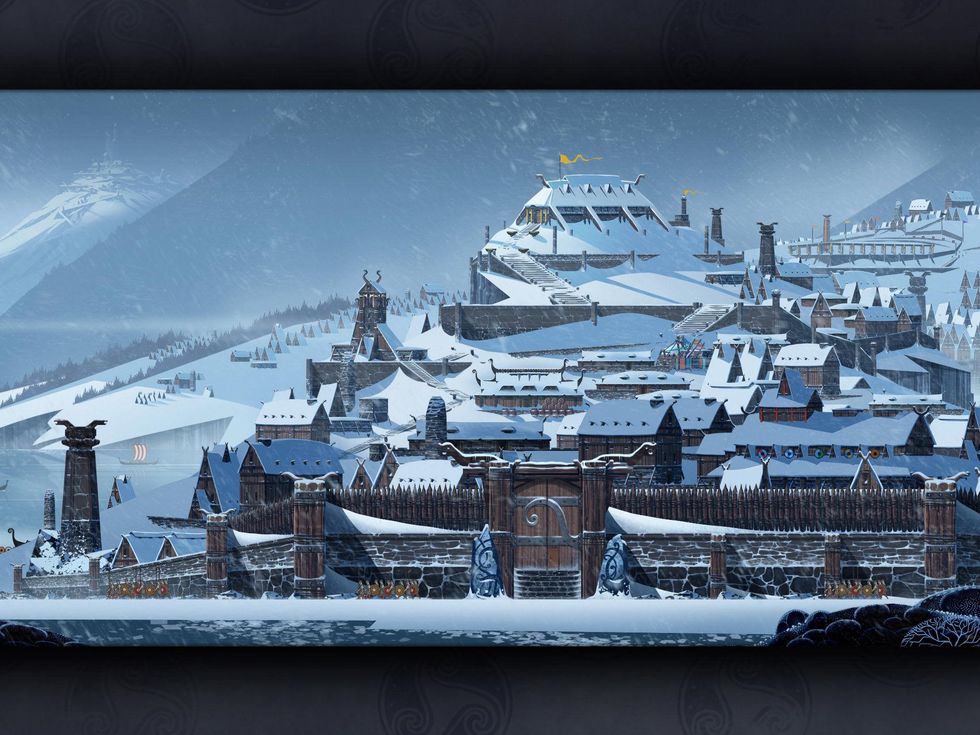The Banner Saga Continues
Indie gamers from Stoic Studio use crowdfunding to create a new world from scratch
If you’re a geek who loves his (or her) share of comic books, indie gaming and pop culture, we hope you're familiar with STAPLE! Independent Media Expo. Instead of relying on the hype of A-listers to deliver keynotes, STAPLE! champions the little guys who embody the DIY spirit of bringing you nerdy art they are passionate about.
One group who knows a thing or two about working on a passion project without millions of dollars in financial backing is Stoic Studios. A gang of indie video game developers based in Austin, Stoic was formed by Alex Thomas, Arnie Jorgensen and John Watson, and the founders will provide their insight into indie game design on Sunday, March 2. Ahead of the conference, concept artist and designer Jorgensen took some time to talk with CultureMap about how his team relied on an enthusiastic community to create a new world from scratch.
The labor of love built from the ground up by Stoic Studio is The Banner Saga, a role-playing game inspired by Norse legend and animated with gorgeous, hand-painted landscapes and characters. A unique game with a unique look, it needed a new, unique studio to make it.
“You could say that Stoic was built to do this exact game,” says Jorgensen. Before the dawn of Stoic, all three founders had a hand in developing Star Wars: The Old Republic for BioWare Austin. Jorgensen worked as lead concept artist, Watson was the lead combat programmer and Thomas would variously work on environmental design or anything dealing with the look and feel of a game.
The three left the realm of Jedi to enter the world of Vikings. “We didn't have lots of game ideas to pan through,” says Jorgensen, “because we knew what we wanted to do from the start — a story-based, tactical turn-based game set in a fictional Viking world.”
In order to make the vision a reality, the team went to Kickstarter, a site that has helped countless indie game studios get off the ground, and opened up a crowdfunding campaign on March 19, 2012. That funding would total $700,000, an amount that proved fundamental in shaping the game.
“When we started the company, our plan was to pay for the entire production ourselves and take about a year to do it. It was a much smaller game in scope and we'd have done everything on it. We bought a small microphone to do foley sounds and I learned Garage Band to make the music. Those two disciplines particularly would have suffered had we not gotten the funding that we did,” says Jorgensen.
Without the funding, Jorgensen feels that the game would have been much smaller in scope, with less animation. “The Banner Saga would have played like a completely different game, but I think the soul and story would have been the same if we hadn't gone the Kickstarter route,” says Jorgensen.
With all of that cash on hand, Stoic had a greater responsibility to allocate funds where they were needed most. The team essentially had a customer base of 20,000 who wanted a return on their investment. But even with the greater pressure, Jorgensen says, “We would not have done anything differently in retrospect as it made for a much better game.”
Chapter one of The Banner Saga was successfully released on January 14, 2014. The team hopes to finish it as a trilogy, but is deciding on whether or not to return to Kickstarter for funding. Jorgensen still sees it as an asset for those looking to make their own game.
“As far as I can tell, Kickstarter is still in a great position to help other indie studios, but the users on Kickstarter have grown up a bit and gotten more savvy. You can't just roll up with a video of developers talking about their game anymore. You need some gameplay to prove that you can at least achieve something that will make people want what you're developing. Still, every day teams are achieving their goals on Kickstarter, so it seems to be working.”
For now, one chapter has closed for the team of Stoic Studio, but they are still ready to set foot on a newer, more epic quest.



